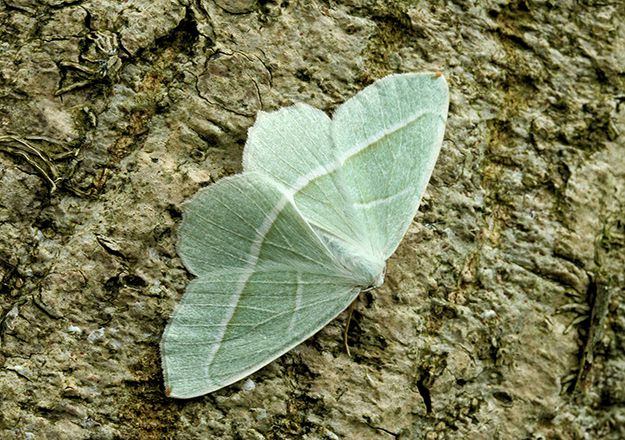- info@sirhowyhillwoodlands.co.uk
- Thomas Ellis Way, Tredegar NP22 4QF
- About Us
- Get involved
- Visit Us
Visit Tredegar & our Woodlands
Come and visit us!
Sirhowy Hill Woodland
Thomas Ellis Way
Tredegar
Blaenau Gwent
NP22 4QF - Wildlife
- Woodland Shop
Latest and greatest products, direct from our
Woodland Shop
Sourced from the Woodlands and the local community.
You have
item(s) in your bag
- Home
- /
- Blog
- /
- Animals & Wildlife
- /
- Moths
- /
- Light Emerald

Scientific name: Campaea margaritata
Light Emerald
Two generations from late May to early August and early August to September. A usually pale-green moth although the colour often fades to whitish-green with age.
Individuals from the second generation are smaller and darker. The hooked forewing tip has a reddish tinge and a white line runs across the fore and hind wings.
The adults may often be disturbed from rest where they sit on the underside of tree and shrub leaves. The larvae can be seen from mid-August to the following May or June, spending the winter lying flat against the stems of the foodplant.
What do Light Emeralds Eat?
Light Emeralds eat a range of broadleaved trees and shrubs including Pedunculate Oak (Quercus robur), Hawthorn (Crataegus monogyna), Blackthorn (Prunus spinosa), Hazel (Corylus avellana), Silver Birch (Betula pendula), Downy Birch (Betula pubescens), elms, sallows, Horse Chestnut (Aesculus hippocastanum), Sweet Chestnut (Castanea sativa) and Beech (Fagus sylvatica).
What habitat does the Light Emerald live in?
Light emeralds live in broadleaved woodland habitats and most other places with trees and shrubs such as parks and gardens.
What family does the Light Emerald belong to?
Light Emeralds belong to the Geometridae family.

Click to view more
Statistics
Scientific Name
Campaea margaritata
Location
England, Wales, Scotland and Ireland
Size
Medium Sized
Wingspan Range: 36-52 mm
Population
Well distributed and generally frequent across most of England, Wales, Ireland and lowland Scotland.

Other Wildlife
How can I help?







